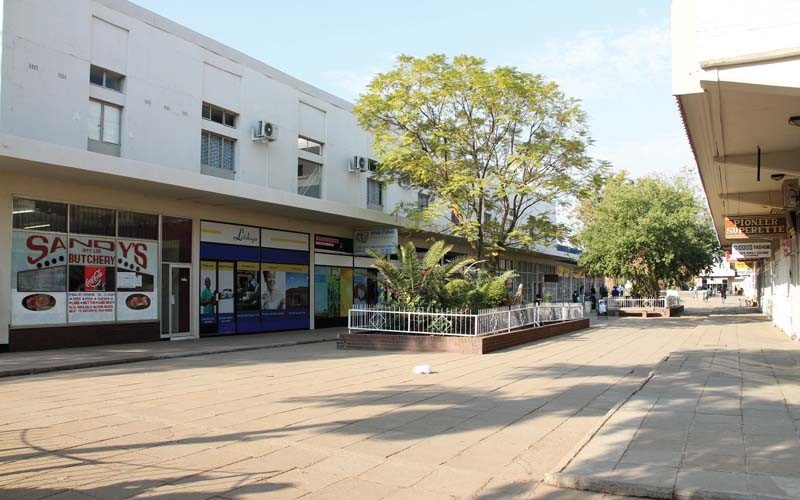Selebi-Phikwe eyes airport city status
Onalenna Kelebeile | Friday May 11, 2018 14:57


Initially, the Selebi-Phikwe Town Council had identified the western area towards Serule as being suitable for an airport, as it is consistent with the 2011-2035 Selebi-Phikwe Development Plan because it is close to the area zoned as Free Enterprise.
The council also maintained that the development plan emphasises densification and compaction of the already existing township built-up area, amongst other considerations. However, the fact that Selebi-Phikwe Economic Zone (SEZ) is expected to be a national aggregation site for base metals, mining and beneficiation and the desire to develop the airport city concept where there are existing airports have compelled council to consider the area towards the airport.
SEZA Chief Executive Officer, Jayson Sechele explained during a special full council meeting this week that the base metals, mining and beneficiation will not only focus on copper and nickel from Selebi-Phikwe but other base metals from other mines nationally and even from the African region. He also said that in line with the concept of developing airport cities, the proximity of an airport to a SEZ is paramount to achieve the dream. He added that the town would also benefit from the horticulture production that would be developed in the Tuli Block area.
Selebi-Phikwe SEZA is accorded a first priority as it is already ahead of other towns in terms of progress as it has already completed the terms of reference for master planning of the site and the tender documents have already been prepared. Sechele explained to council that, “based on the focus of Selebi-Phikwe as a regional base metals mining and beneficiation, coal and coal-based chemicals, tourism, general manufacturing and logistics, the SEZ site with particular respect to direct rail connection for haulage of various heavy base metals, coal and other rail freight-related raw materials, the option for the area around airport projects itself as the best site.
Sechele further indicated that the location would maximise the use of already existing infrastructure without any additional funds being spent to extending any infrastructure to the site and also the prospects of developing Selebi-Phikwe airport as a regional airport becomes exciting. SEZA also acknowledged that the airport area falls outside the township boundary, but observed, however, that it is located within the Selebi-Phikwe Planning Area boundary. This would require consultation and land allocation by Ngwato Land Board, he noted. “At the end of the day all citizens irrespective of whether they reside within or outside the township boundary stand to benefit unfettered from the proposed developments,” he indicated.
The fact that council has now adopted the area within the planning area boundary, preferred by SEZA, the procedures and formalities regarding the rezoning, subdivision, cadastral survey and land allocation can commence. This also allows SEZA to continue with the procurement process for master planning of the site. Council has also been informed that the Ministry of Land Management, Water and Sanitation Services has made a budget provision for compensations related to the SEZ project.
Earlier on, council’s chief physical planner, Samuel Aaron explained that initially two sites were identified. This being a site on the entrance of Selebi-Phikwe from Serule while the area towards the airport and the site on the entrance of the town from Serule was adopted. He said the area was found to be best located and council drew from its past experience and made consideration of the likely impacts of pollution from the envisaged SEZ developments. He said the airport area option also observed that the airport city concept would add to the tourism product of the SPEDU Region.
He added that SEZA presented its position to the Physical Planning Committee at the end of April and they were required to address concerns raised by council that site on the town entrance is consistent with the town’s 2011-2035 development plan. “SEZA intimated that from the worldwide experience SEZ thrived as airport cities. They said that the area may have been suitable before, but the global market dictates a new approach of economic development in the form of airport cities,” he said.
He further said that SEZA drew council’s attention to the fact that the existing railway line may be private. “But participation of the private sector is encouraged and the SEZ is not attracting processing industries that would produce noxious gases but they only turn by-products into finished goods, hence the issue of pollution is not a concern because SEZ are by nature green.”
It has also been emphasised that the Strategic Environmental Assessment, which would be done with the master plan, would deal with the issues of pollution. Aaron said the Physical Planning Committee corroborated SEZA’s submission in that it was evident that smoke from the mine spread south westwards as such SEZA location at the airport site would still not affect the town.
“We had argued that Selebi-Phikwe as a base metal beneficiation city may have been overtaken by events as the mine has ceased operation, but SEZA enlightened us that SEZ would be targeting inputs from as far as the SADC countries where products such as aluminum and copper goods would be produced for both local and international markets,” he added.
Council adopted SEZA considerations as the town aspires to become an airport city.
